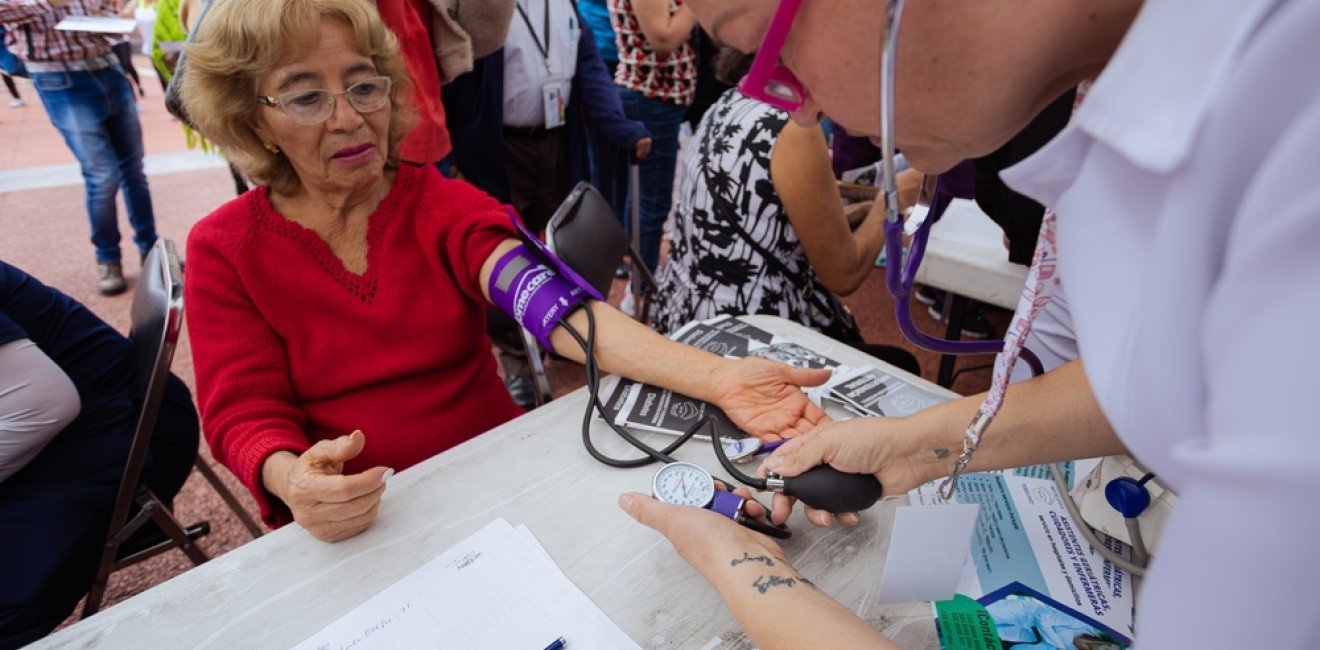This piece is based on remarks delivered during the Mexico Institute’s Election Series seminar, “Challenges and Opportunities in the Implementation of Health Policies 2024-2030.”
Public health policy has not always featured prominently in Mexican presidential campaigns despite the obvious importance of access to quality healthcare. The 2024 election may mark a positive change – both Sigamos Haciendo Historia candidate Claudia Sheinbaum and Fuerza y Corazón por México candidate Xóchitl Gálvez named seasoned policy experts to lead their healthcare teams, and both have issued detailed plans should they win the June 2 election.
Sheinbaum’s 10-point República Sana program focuses on prevention, early childhood care, and strengthening the public system, especially IMSS-Bienestar which provides healthcare services for those without alternative healthcare coverage. Galvez’s plan focuses on addressing deficiencies in the Lopez Obrador administration’s public health management such as restoration of Seguro Popular, improving distribution of medicines, and improved access to specialists.
Though the campaign platforms understandably focus on domestic health concerns, Mexico’s next president should collaborate with her U.S. counterpart to improve the health and welfare of citizens and residents in both countries. Of the numerous areas for potential collaboration, a few stand out as potential “win-win” opportunities.
-
Vaccination – Both campaign platforms address the importance of improving access to vaccines, especially for children. Vaccines are an inexpensive and extremely effective preventative measure. While Mexico has one of the world’s most comprehensive vaccines schedules, the Mexico City Human Rights Commission, citing the Secretary of Health, notes that only 42.6% of all one-year-olds have been fully vaccinated. Mexico could, in coordination with the United States and Canada, develop and commit to implementing a trilateral vaccine schedule. Doing so would enhance coordination among national health authorities, facilitate participation in cross-border educational programs, and provide additional commercial opportunities, among other benefits.
-
Nursing – The United States is facing a critical shortage of geriatric nurses while the share of the population age 65 and older, many of whom are Spanish speaking, continues to rise. At the same time, Mexico is an increasingly attractive retirement destination for U.S. retirees given the preferable climate, lower cost of living, cultural opportunities, and the overall quality of life. As a result, there is demand in both countries for bilingual nurses with specialized geriatric care training. This shared challenge could be addressed through joint degree and student exchange programs that would increase the number of binationally trained and educated nurses (including language fluency). Cross-border or binational nursing training could help reduce costs and increase the number of available training slots, allow for familiarization with diverse types of technology and standards of care, and enhance cultural awareness for nurses who complete part of their training abroad. Jointly developed curricula would ensure that graduates attain the necessary experience and knowledge to meet certification requirements in both countries. Implementation of these programs would enhance both countries’ ability to address rising demand while promoting best practices in the treatment and care for an aging population.
-
Regulation – Though not referenced directly by the candidates in their plans, Mexico’s health regulatory agency, COFEPRIS, plays an essential role in the health of Mexican citizens. The bilateral relationship between COFEPRIS and the US FDA is strong but could be deepened further. One option to improve efficiency and increase confidence would be through closer collaboration on plant inspections around the world. Since no single agency can regularly inspect every plant from which medicines are procured (domestically or internationally), collaboration between agencies using common inspection standards and procedures would reduce duplication and increase the total number of plants inspected each year. A more ambitious, and perhaps longer-term goal would be the mutual recognition by the FDA and COFEPRIS of approvals for drugs and devices issued by the other agency. COFEPRIS already accepts registrations issued by FDA and other high-standard regulatory agencies. Building on confidence acquired through the development and implementation of common inspection protocols referenced above, Mexico and the United States could jointly develop review procedures for new medications, diagnostics and devices such that approval by either agency would be acceptable in both countries.
-
Nearshoring – Mexico has seen substantial nearshoring investment as firms seek to shorten supply lines and avoid punitive tariffs applied by the United States on goods produced in China. Much of the investment has occurred in the automotive sector; the US and Mexican governments have also emphasized semiconductors. In contrast, the potential for increased production of pharmaceutical products has been largely overlooked. Mexico and the United States depend heavily on imports of active pharmaceutical ingredients (APIs), key starter materials (KSMs), and finished medicines from China and India. Policies to facilitate and encourage investment in production of APIs, KSMs, and finished products for the North American market could reduce dependence on Asia by diversifying the supply chains. The Mexican private sector has the capacity to help address this dependence and there are several legislative proposals under consideration in the US Congress such as the Manufacturing API, Drugs, and Excipients in America (MADE) Act. To capitalize on the opportunity will require the federal governments, in both countries, to create a conducive regulatory framework. Encouraging production in Mexico would also demonstrate appreciation for one of the key lessons of the COVID-19 pandemic – the danger of over-reliance on a single provider for critically important healthcare products.
-
NAPAPI – Building further on the lessons of the pandemic, Mexico’s next president should insist that the North American Plan for Animal and Pandemic Influenza (NAPAPI) be revised in accordance with the commitment of the three leaders during the 2023 North American Leaders Summit. Regrettably, a date for the next summit has not been announced and the NAPAPI revision, reportedly near complete, has not been released.
-
US-Mexico Border Health Commission – This Commission, despite its critically important function in supporting the health and welfare of communities on both sides of the border, is largely moribund; its website has not been updated since 2020, for example. Mexico’s next president, in concert with her U.S. counterpart, should instruct their respective secretaries of health to reactivate the Commission.
There are doubtless additional areas where our countries can share best practices and collaborate to address common challenges such as diabetes, obesity, and coronary health. Hopefully Mexico’s next president will take advantage of the above and other opportunities to improve the health of Mexican citizens while further deepening the bilateral relationship with the United States.
Author


Mexico Institute
The Mexico Institute seeks to improve understanding, communication, and cooperation between Mexico and the United States by promoting original research, encouraging public discussion, and proposing policy options for enhancing the bilateral relationship. A binational Advisory Board, chaired by Luis Téllez and Earl Anthony Wayne, oversees the work of the Mexico Institute. Read more

Explore More
Browse Insights & Analysis
Greenland’s New Governing Coalition Signals Consensus

The Future of France's Far-Right Party

Ukrainian Issue in Polish Elections

